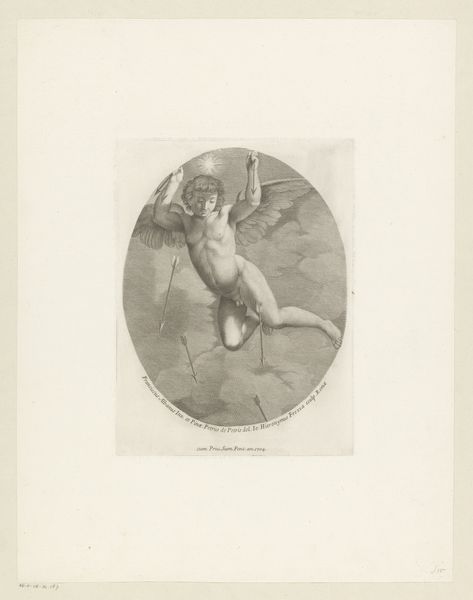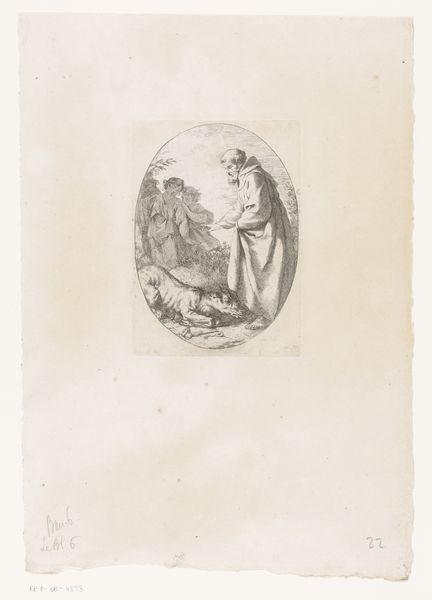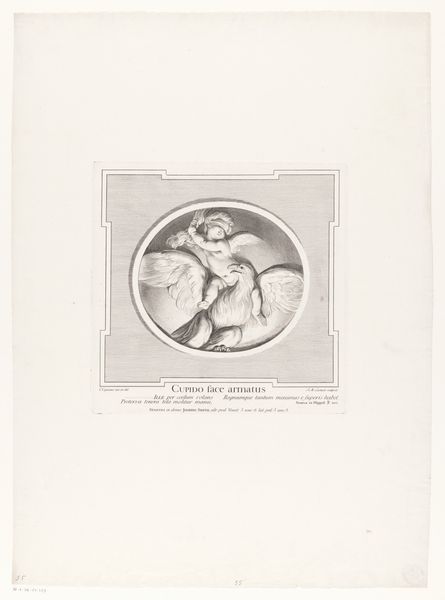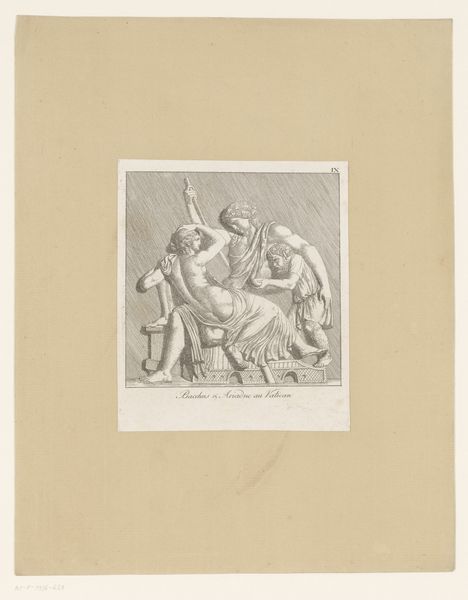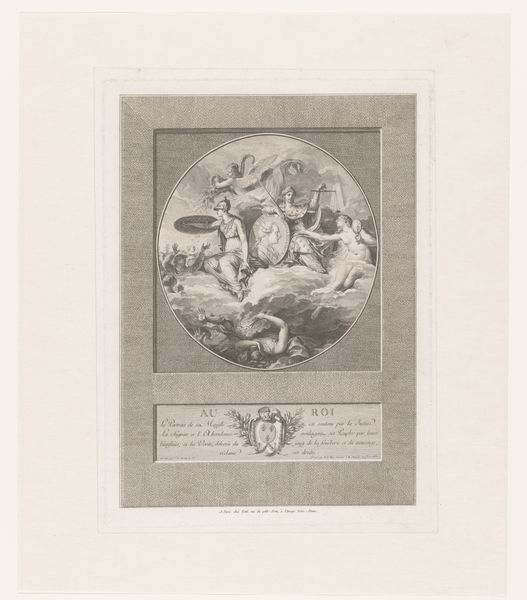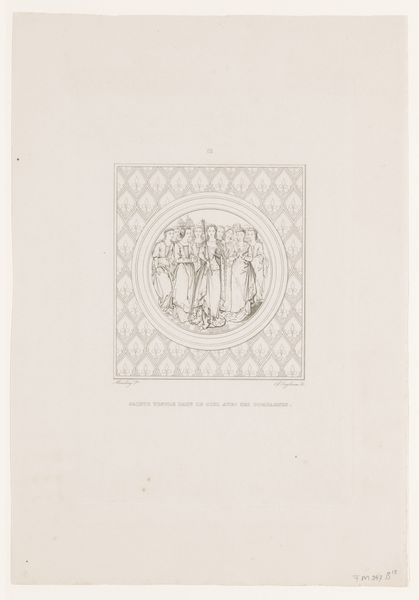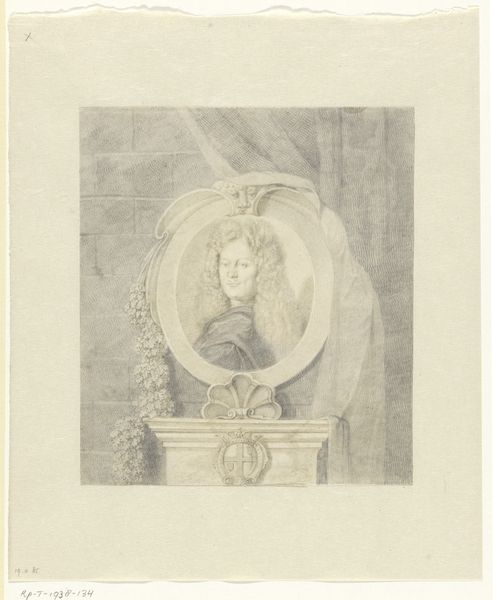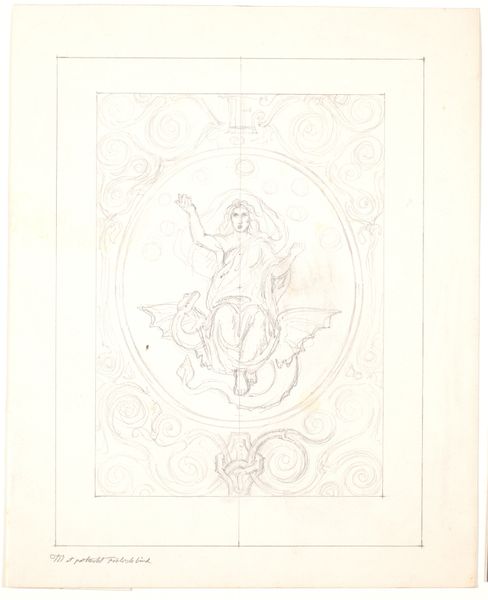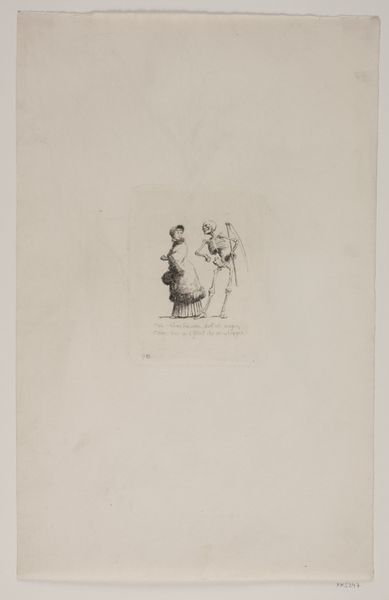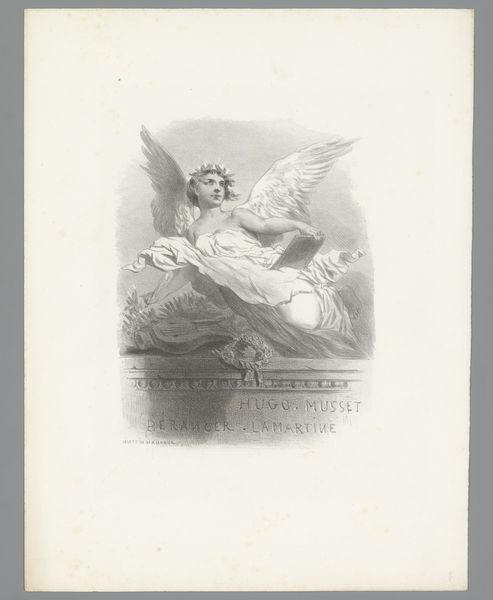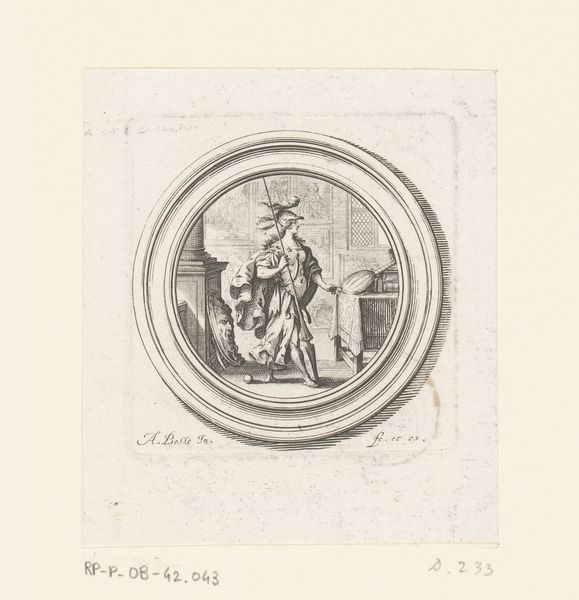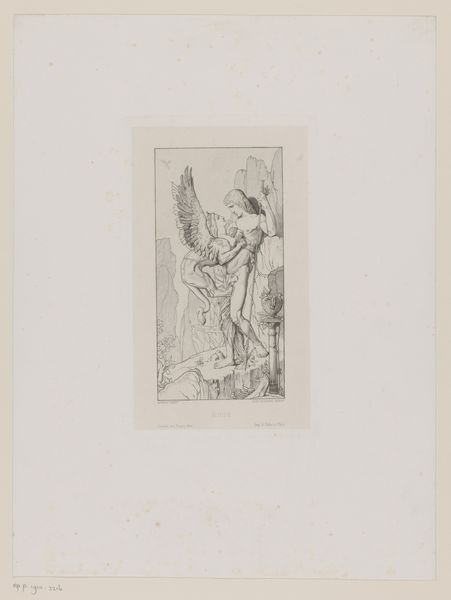
Dimensions: height 591 mm, width 438 mm
Copyright: Rijks Museum: Open Domain
Carl Federle created ‘Sappho en Amor’ using lithography, a printmaking process that democratized image production in the 19th century. Lithography relies on the simple principle that oil and water don't mix. The artist draws on a flat stone or metal plate with a greasy crayon, then applies water. Ink adheres only to the greasy areas, which are then transferred to paper. In ‘Sappho en Amor’, Federle captures soft gradations and delicate lines by exploiting the lithographic process. The image is rendered in muted tones, achieving a chalky effect. The ability to produce numerous copies from a single stone allowed for the wide dissemination of images. This print would have made classical themes accessible to a broader audience, reflecting the burgeoning consumer culture of the time. Considering the historical context of reproductive media and printmaking invites us to appreciate the technical skill and material considerations that bridge the realms of craft and fine art.
Comments
No comments
Be the first to comment and join the conversation on the ultimate creative platform.
